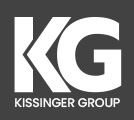Tackling Change Fatigue: Practical Strategies for Leaders to Support Their Teams
Change is constant. But when the pace of change accelerates, it can wear people down. This is change fatigue—a state where employees aren’t just busy, they’re overwhelmed.
In a recent panel discussion hosted by Sondra Kiss of Kissinger Group, experts Christine Wenger (Director of HR Communications at Toyota) and Ogbe Airiodion (Senior Change Management Consultant) shared practical insights on how leaders can identify, manage, and reduce change fatigue. Here’s what you can do to keep your team energized—even in the thick of transformation.
What Is Change Fatigue (and Why Should You Care)?
Change fatigue happens when employees face too many changes in quick succession or simultaneously. It leads to burnout, disengagement, and resistance. And with companies juggling 20, 30, sometimes 50 initiatives at once, it’s no wonder nearly half of employees report feeling overwhelmed.
But here’s the kicker: 70% of change initiatives fail—not because of poor strategy, but due to lack of leadership support and employee buy-in.
So, what can you do?
Step 1: Recognize the Signs of Change Fatigue
Christine Wenger points out that the signs aren’t always obvious. Sure, you might notice:
Lower productivity
Increased sick days
Short tempers or low engagement
But there are also subtle cues:
Employees who don’t take time off (because they feel they can’t)
Decision paralysis (even on small things)
Team members going quiet—cameras off, not speaking up in meetings
As a leader, tuning into these signals is critical.
Step 2: Conduct a Change Saturation Assessment
Ogbe Airiodion recommends assessing how many initiatives are impacting your people. This means mapping out:
Every project, program, or transformation planned or in progress.
Grouping employees into personas (executives, managers, frontline staff).
Estimating how much time each group needs to invest in adopting changes.
If a persona needs more than 75 hours in a year to absorb changes? That’s unsustainable.
This assessment helps you get a clear picture of who’s at risk and where to adjust.
Step 3: Set Realistic Expectations
Unrealistic timelines and shifting priorities are major stressors. Both Ogbe and Christine stressed this: set achievable goals. When that’s not possible (because, let’s face it, work has to get done), Christine suggests using a Stop-Start-Continue exercise:
Stop: What can we pause or drop?
Start: What’s essential to begin?
Continue: What’s working and should stay?
Sometimes it’s about testing what you can pause—and seeing if anyone even notices.
Step 4: Build Resilience Muscles
Christine brings a neuroscience lens here: our brains are wired for predictability. They’re like auto-complete on your phone—constantly trying to guess what’s next. When faced with uncertainty (hello, constant change), our brains burn energy trying to fill in the blanks.
The antidote? Resilience.
Resilient teams are:
3.6x more likely to hit financial goals
3.9x more likely to retain customers
Simple ways to build resilience:
Start meetings with connection (ask a fun question, like “What animal matches your working style?”).
Encourage breaks—even 5 minutes helps.
Reflect regularly—what’s going well? What helped us last time?
Step 5: Streamline Communication
Change fatigue isn’t just about the amount of work—it’s also about the noise.
Ogbe suggests consolidating communications. Instead of five project managers bombarding the same audience, sync up and send one clear message.
Christine adds: Always explain why a change is happening and what is not changing. This gives people something stable to hold onto.
Consider creating a Change Command Center or Center of Excellence to align messaging and efforts.
Step 6: Use Change Champions
Employees often trust peers more than leadership during tough transitions. Ogbe recommends building a change champion network—trusted employees who reinforce messages and help their colleagues navigate change.
Christine expands this with roundtable forums or listener networks to gather feedback, preview messages, and refine them before they hit the whole organization.
Step 7: Recognize Efforts (Early and Often)
Don’t wait until the end of a long transformation to celebrate. Recognize wins along the way:
Shout-outs in meetings
Success stories in newsletters
Praise tools (like Microsoft Teams recognition)
And here’s a pro tip from Ogbe: Don’t shy away from talking about what didn’t work. Transparency builds trust—and sharing how you turned things around helps others learn.
Change fatigue is real—but with the right strategies, leaders can help their teams not just survive, but thrive.
Want more insights like this? Be sure to check out the full panel conversation for the in-depth discussion with Christine and Ogbe, and download the accompanying handout.
